Amadeus, based in France, one of the premiere manufacturers of high-end sound reinforcement systems and custom studio speakers, has announced the install of a massive speaker system, featuring the newly-released PMX 12 D self-powered active speakers, within a new multi-disciplinary institution, the Arts & Creative Technology Center (ACT), in Gwangju, South Korea.
ACT Center puts Gwangju, South Korea, at the forefront of global art, design, and culture dialogue. Launching with a major festival and exhibition in November 2015, ACT Center commenced a dynamic year-round program of activities that brought together leading Asian and international talents to share, collaborate, and inspire.

One of the primary initiatives of the ACT Center is the ‘Arts & Technology Convergence Lab’ which disseminates cutting edge research and is a breeding ground for new work in media arts, interaction design, engineering, and digital fabrication. ACT Center will further continue to research, produce, exhibit and distribute innovative contents and artworks that demonstrate the creative use of emerging technology, cultural diversity and traditions of Asia. ACT Center is part of Asian Culture Center (ACC) that is one of the major cultural initiatives of the Korean Ministry of Culture, Sports and Tourism. Located on the site of the former provincial government building in Gwangju, ACC hosts several institutions and facilities that include the ACT Center, the Research Institute for Asian Culture, Library & Archive, Center for Children, multiple theaters, and exhibition halls, and the ‘May 18 Memorial’ event.

The Amadeus PMX 12 D speakers installed in the ACT Center feature built-in 24/96 DSP, and analog, AES3 and Dante inputs; a coaxial driver with a 12-inch woofer and a 2-inch tweeter with compression driver; and is bi-amplified using two dedicated high resonance digital amplifiers, featuring outstanding efficiency. The PPM-PWM fixed frequency class-D amplifiers are equipped with a switched mode power supply, delivering 1500W (LF) + 400W (HF).
Michel Deluc, Amadeus’ Director of Research & Development, says, “We were among the first manufacturers of electroacoustical equipment to look into audio transfers over Internet Protocol. We are committed to minimizing latency as well as unnecessary AD/DA conversions that impact signal quality. This started ten years ago, the year we wrapped up development of our first line of bi-amped coaxial systems featuring EtherSound I/O, which was designed for the French Institute for Research and Coordination Acoustic/Music (IRCAM). The technological gains offered by the Dante protocol and its widespread adoption by professionals led us to consider its implementation within our systems.”
Each speaker channel is under control by a 64-bit digital processing unit capable of a 118 dB dynamic range. Each of these on-board DSP units include a module dedicated to managing core system parameters including system EQ, time alignment between sections, limiting, and transducer thermal protection. This level of control makes the PMX D Series fully protected and able to operate at the full extent of its abilities. Given that digital-to-analog conversion should happen at the latest possible stage in an electro-acoustical speaker system, the PMX D Series also integrates two digital inputs/outputs conforming to the AES3 digital audio data transfer standard. These are coupled with a high resolution 24-bit/96kHz converters placed as close as possible to the electronic amplifiers, thus working in perfect combination with them.

Dongyup Kwak, A/V Consultant and CEO of ‘C2 Artechnolozy’ explained, “Before meeting the ACT Center President, I had no sound system installation ideas for this venue, ‘Space 1’ (called The Ground) was a really big area for Media Art Installation & Exhibition – the room is 70m by 30m with 18m ceilings. The President’s wish was to create a platform for artists, designers, engineers, and researchers to develop forward-thinking ideas, aiming for the ACT Center to become a multicultural interface that fosters knowledge and skill exchange between creatives in Asia and the rest of the world.”
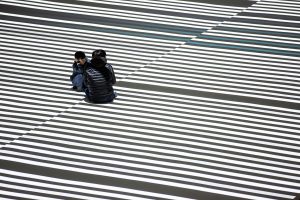
“We proposed a state-of-the-art audiovisual immersive ‘canvas’ containing among other things, an immersive giant screen, a 3D spatial sound environment, and a multi-layer video mapping system capable of showing the biggest installations,” continued Kwak.
“For immersive installations and exhibitions, we had to create an intelligent ceiling, equipped with chain motors, including audio, video and network connections. So, I designed a custom steel truss ceiling featuring 64 chain hoists and 64 digital cable reels, combined with CAT5E network cable reels with mercury wetted contacts. After many experiments, the Mercury wetted contacts were found to be quite stable solutions,” reveals Kwak.
Movecat’s PLUSlite 500 Series chain hoists were selected as rigging hoists by the ACT Center. C2 feel they are the first choice when it comes to the safe and reliable hoisting and positioning of trusses, stages, ground support structures and other devices used in media applications. All chain hoists are under control by the Movecat’s I-Motion Expert-T II System Controller, a high-end product for the systemic control of kinetic drives in larger and complex projects. Developed for applications with up to 240 drives, it allows the control and supervision of any application, in the field of rigging. “In Korea, we apply Europe’s D8 Plus regulations which require a double brake system, double gear box, and a 1:10 safety factor,” explains Kwak.

For immersive video, C2 selected the 4x4Pro flagship media server from “d3 Technologies” able to drive up to four 4K outputs or 16 HD outputs, transfer content in minutes instead of hours, and switch video signal formats as the industry evolves. It is connected to twelve Panasonic PT-DZ21K projectors with unique built-in quad-lamp system, with new high-power UHM lamps, helping to make the body extremely compact while providing an astounding 20,000 lm*1 of brightness. The series is compatible with both passive and active 3D projection systems.
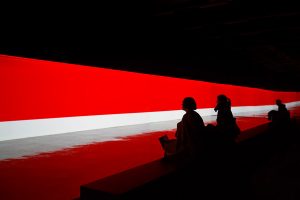
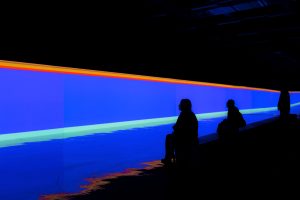
Dongyup Kwak adds, “For immersive audio, we selected a Sonic Emotion WAVE I 3D wave field synthesis rendering unit for processing of up to 32 input and up to 64 output channels.” Based on Huygens’ Principle (1678), the idea of Wave Field Synthesis (WFS) was developed in the Netherlands in the 1980s by the Delft University of Technology. WFS concept makes it possible to synthesize “sound holograms” by simulating acoustic waves produced by virtual sound sources.
To do this, the system uses a large number of loudspeakers, regularly spaced and used conjointly. They are each controlled with a delay and a gain to form a wave that emanates from the desired location of the virtual source. This process is repeated for each sound source in the sound scene. The major benefit of the WFS technique is to create a coherent sound field in an extensive area, therefore preserving the fidelity of the spatial image – the position of the sources – even for listeners located at the periphery of the zone or for listeners moving within the zone.
“The piece de resistance within this installation was the speaker system design. The requirements were practically unrealizable. The technical, networking and acoustical constraints pushed us to develop a new series of bi-powered and Dante-enabled point source loudspeakers, allowing remote control of each built-in DSP for an optimal adjustment to the acoustical properties of the listening space. The Amadeus ‘PMX D Series’ speaker was born from creating the sound system for this installation by enhancing our original PMX speaker design with these new technical capabilities,” states Gaetan Byk, Marketing Manger at Amadeus.
“Amadeus has been an excellent partner for the ACT Center,” offers Kwak.
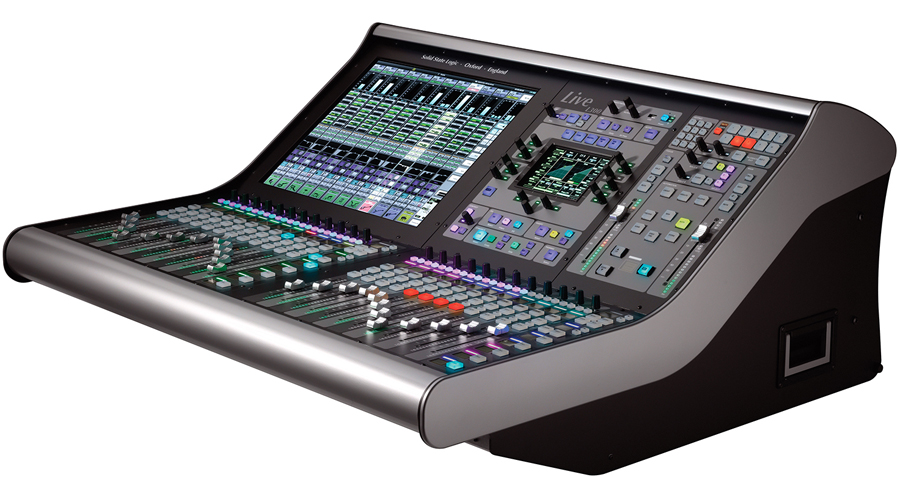
The sound system is completed with an SSL Live L300 digital mixing console. Philippe Guerinet, Director of International Sales for SSL and SSL France Manager, said, “There are several significant benefits that are key reasons to implement this network based routing solution. Audio over IP allows us to put the stage-boxes where needed, with minimal cabling, which in this complex exhibition hall setup is very important.
And it easily lets us connect all kinds of Dante-enabled gear: Amadeus PMX D (Dante-enabled) speaker systems, SSL L300 console, SSL Network I/O stage-boxes, and every other ancillary equipment needed. This network approach notably allows us to solve classic constraints, especially channel count, synchronization, redundancy, latency, and signal distribution without adding any traditional TDM solution.” “Last but not least, the technical solutions chosen by ACT ensure total flexibility and an astonishing audio quality, while surprisingly reducing overall cost and making expansion straightforward as well as cost-effective’,” added Guerinet.
The specially developed Amadeus PMX D Series features a refined Dante I/O section, an on-board 24/96 kHz DSP unit dedicated to managing core system parameters including system EQ, time alignment between sections, limiting, transducer thermal protection. “This studio-grade speaker system combined with the legendary sonic signature of SSL is a very good marriage, which makes listeners, attendees and artists very impressed,” concludes Dongyup Kwak.
In addition to legendary Amadeus reliability and sonic excellence, PMX D Series incorporates a newly refined Dante I/O section, offering options for full integration with leading third-party networking. Audio signals are selectable from one channel of analog, two channels of AES3 digital, and two dual redundant Dante networked digital inputs. Input signals are individually selectable for each channel.
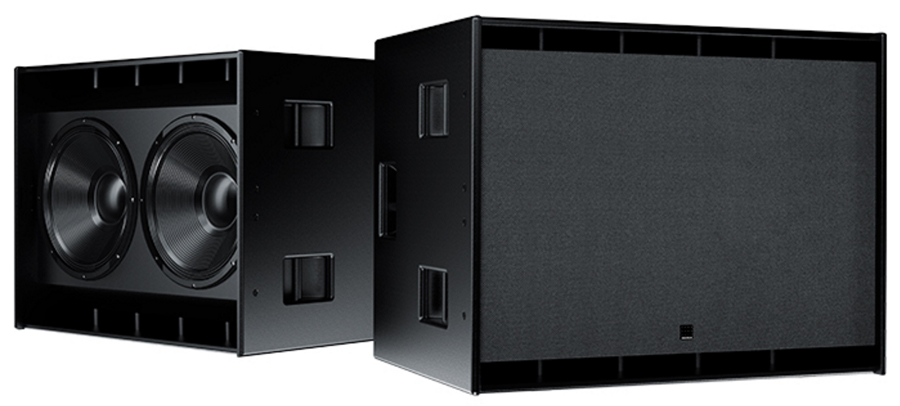
As the first company to include Audinate’s Dante technology in a high-end active coaxial speaker series, Amadeus joins 275 other manufacturers utilizing Dante, making it the industry-leading audio over IP networking solution with more than 675 Dante-enabled products now available worldwide. Each Dante Ethernet RJ-45 network input allow remote control of the PMX D’ processor for an optimal adjustment via dedicated software to the acoustical properties of the listening space. The software is an App that runs on Macintosh, Apple iPad and Windows computers.
A very well made video shows the ACT center, the contractors at work and some exclusive footage of its innovative contents.
ACC Creation – ACT Festival from ACT Center on Vimeo.
Audio equipment installed in the new South Korea “ACT Center” building:
- Amadeus speakers: PMX 12 D with built-in Analog, AES3 and Dante I/O cards (12” LF + 2” HF): 74-unit
ML 28 High-efficiency Subwoofer (2 x 18” LF): 10-unit - Lab.gruppen amplifiers: PLM 20000Q (4 x 4400W/4Ω, Analog, AES3 & Dante I/O): 3-unit
- Sonic Emotion software: WAVE I 3D wave field synthesis rendering processor: 1-unit
- Solid State Logic console: SSL Live L300 digital mixing console: 1-unit
Plus d’infos on : website Sonic Emotion, website Solid State Logic and website Amadeus,







